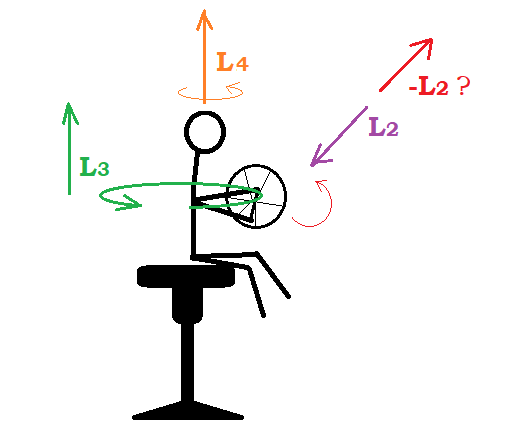Let us say we have this configuration
A person sitting on a rotating stool, which is initially at rest, holding a wheel that is rotating as indicated in the figure. The person then changes the axis of rotation of the wheel so that the new axis of rotation, initially, pierces the screen.
Initially, the system wheel$+$person had an angular momentum $\textbf{L}_{1}$ equal to the angular momentum of the wheel. In the new configuration, the person and the wheel (center of mass(CM) of the wheel) both start to revolve around the longitudinal axis of the stool; the person now has an angular momentum $\textbf{L}_{4}$ and the CM of the wheel an angular momentum $\textbf{L}_{3}$. The wheel has also another angular momentum $\textbf{L}_{2}$ due to its rotation around its axis.
According to conservation of angular momentum, the total angular momentum of the initial configuration must be equal to the total angular of the new configuration. Thus, direction-wise, there must be an angular momentum $-\textbf{L}_{2}$ that cancels $\textbf{L}_{2}$ at each instant.
Where does $-\textbf{L}_{2}$ exactly come from?
N.B. $\textbf{L}_{2}$ below is perpendicular to the screen (page).


